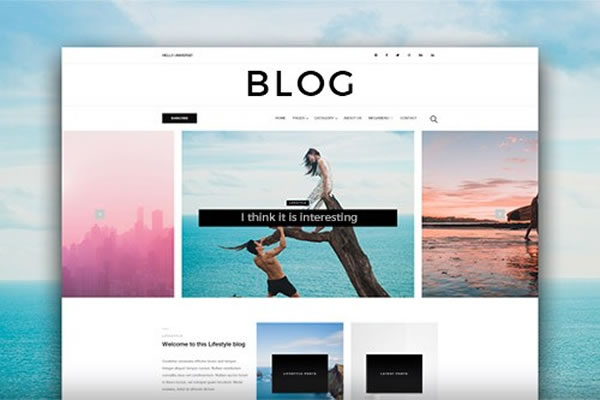DEVELOPING YOUR ULTIMATE SALES TOOL
Standard Website Design
People come to us often and ask what a standard website should cost and what’s included in the development. We’re here to tell you that not every website is the same. Even standard websites have different “standards” that need to be met depending on the business needs.
In general, a standard website starts with 5 pages. This allows Google to get enough information it needs and gives your prospects enough background on you and what you do to make an impact.
What’s most important about your website pages is that they’re designed in such a way as to keep your visitors reading and browsing your content. The longer a visitor stays on your website, the more chances you have at turning that visitor into a customer.
Our packages include on-site search engine marketing because we know that Google is constantly changing. If we continue to do the same old thing we risk your competition outranking you. Your website should continue to adapt & change based on your audience & Google’s needs. Never worry about an algorithm change overwhelming your company again!

What is a Standard Website?

Standard websites make up most of the internet today. We call them standards because they follow a specific theme and framework that every visitor is used to.
A standard 5-page website will have the Landing (home) page, an About Us page, a Services page, Gallery/Resources/Menu/More Info page, and a Contact us page.
One of the most common mistakes people make when doing their own website design is forgetting to add clarity. People only have a 5-second attention span online and if they can’t find a clear answer to what they’re looking for, then they will leave and visit another site. Our goal is to keep your prospects on your site as long as possible and have them connect with you asap!
What pages go into Standard Website Design?
Menu Page
If you own and operate a restaurant, bakery, pub, diner, bar, or parlor, you'll want to share your menus. Menu pages are very effective at keeping visitors on your site.
Locations Page
In some cases, you'll need a "Locations" page to showcase your branches. Generally we find these pages on much larger websites that require multiple pages for their branches.
Gallery Page
Many websites use photo galleries to showcase products and photography. You'll find these on many photography websites.
Booking / Scheduling Page
Some of our clients have a dedicated page just for on-boarding and booking / scheduling new clients. Having this as a separate page makes it easier to navigate to.
Landing Page
All websites start with a landing page, also known as a "home" page. This is the main root page that everyone visits first.
Products Page
Some Websites have a "Products" page. In most cases this will lead visitors to an online store full of products. In other cases, there might only be a few products offered and page is used just to provide information on the products to educate visitors and entice them to call for more information.
Resources Page
Many of our health industry clients utilize a "Resources" page that provides many different links to specific programs or helpful information.
Instructions Page
If you sell a specific product that requires instructions to build or use, having an instructions page directly on your website will make customers happy.
About Us Page
Generally speaking your next page would be an "About Us" page which would tell your visitors more about you and your team and why you're the best option.
Services Page
Many websites have a "Services" page. This is where you would want to lay out as much details as you can about the unique services you provide.
Contact Page
Almost every website has a "Contact" page with a short 5 question form and a submit button. You'll also find other information regarding where the business is located and other ways to get in contact.
Multiple Service Sub-Pages
It's possible to have multiple service and product pages as well. Generally you'll find them on a drop down menu with many sub-pages. Our agency website uses this approach to make it easier for our visitors to find and read the unique content they're looking for.
What do we use to build standard websites?

Well, back in 2004 we were using Macromedia Suite (Dreamweaver, Flash, Fireworks) to build websites with HTML, CSS, and JAVA. It took much longer than it does today. Luckily today there is a much better solution.
We build all our websites with WordPress.
WordPress is the largest website builder on the internet today and is responsible for over 40% of all websites online. We use this platform for the 60,000+ website plugins and themes that are constantly evolving to keep up with demands.
WordPress allows maximum customization. It’s a What You See Is What You Get – WYSIWYG – site builder. In just mere clicks we can get a brand new website started and under construction. It easily adapts to all mobile devices and allows for pinpoint SEO.
Do I need a Blog with my standard website design?

Blog pages are making a large comeback today. With Google’s most recent algorithm change (summer 2022) blogs have become a necessity. Any website that Google doesn’t see activity on in the past 6 months will lose its ranking on the search results pages.
Blogs are articles that we write up from time to time that focus on providing information and a solution to a problem that your visitors are looking for. Blogs can rank very well on search engines and can be easily organized by keywords, tags, and categories.
We recommend you have 1 blog post written each month to keep a fresh and relevant standing with Google and your returning visitors but many of our clients do blogs once a week.
Blogs are also a good way to cross-promote your other content, especially YouTube videos! Many people are visual creatures. They need to see something moving to understand it. When we add videos to your blog that is impactful!